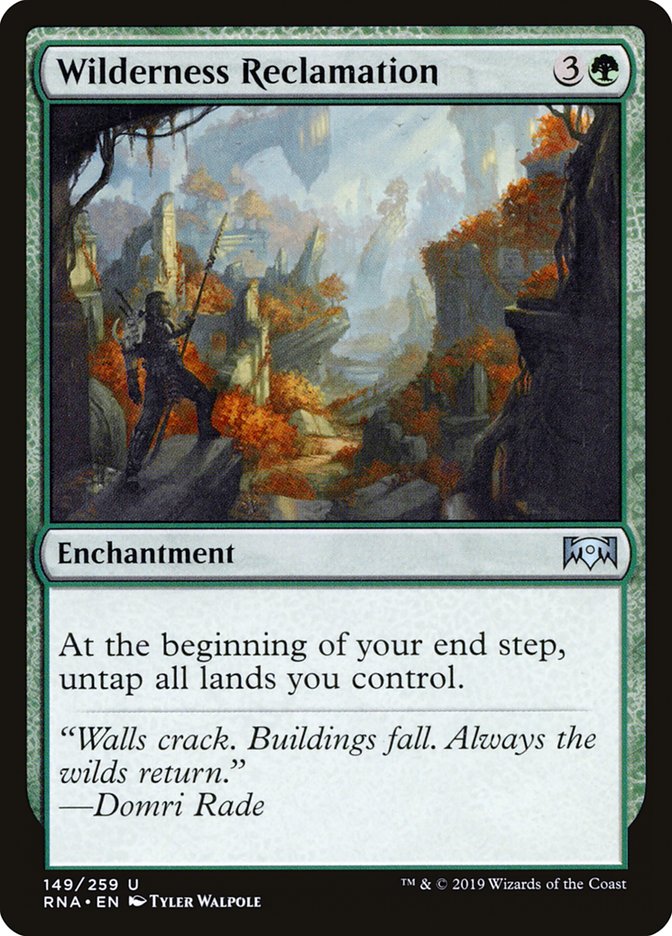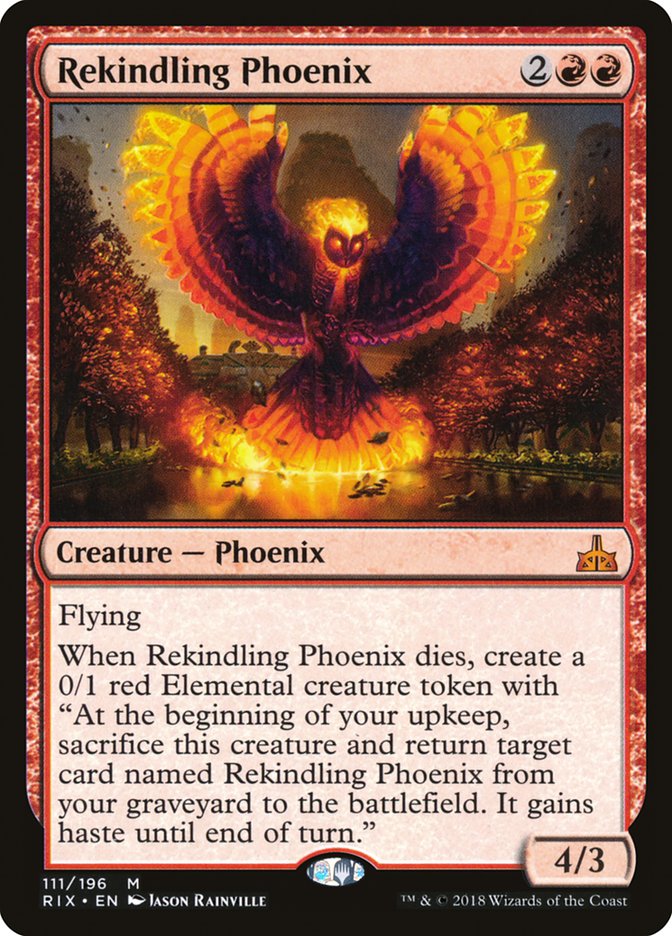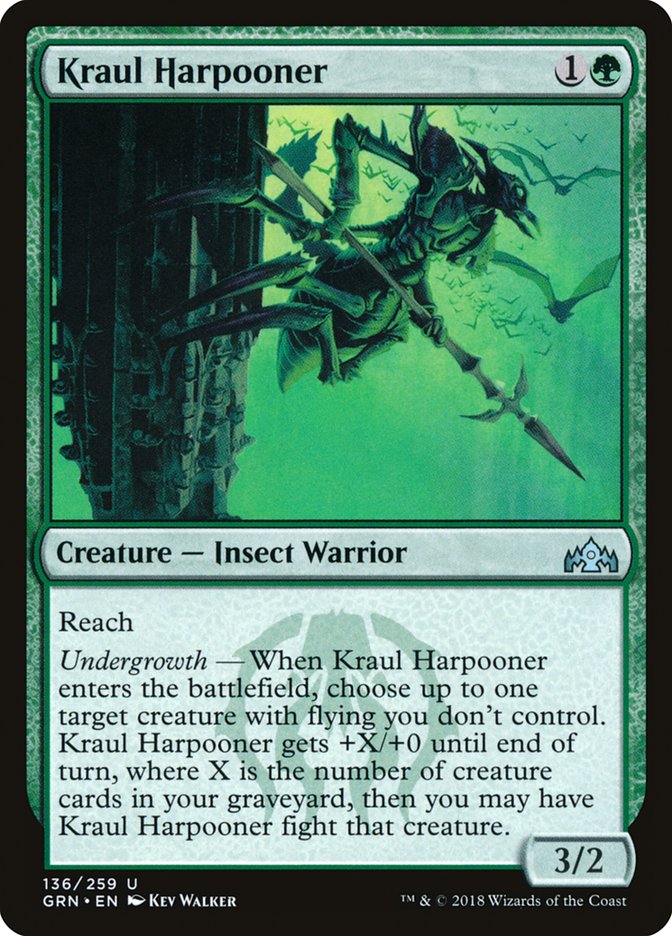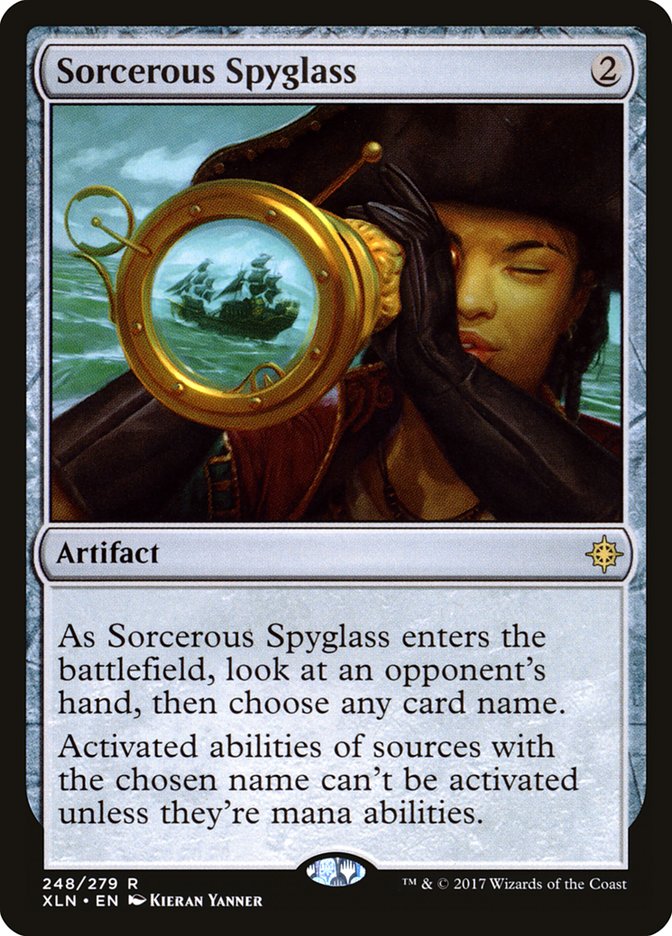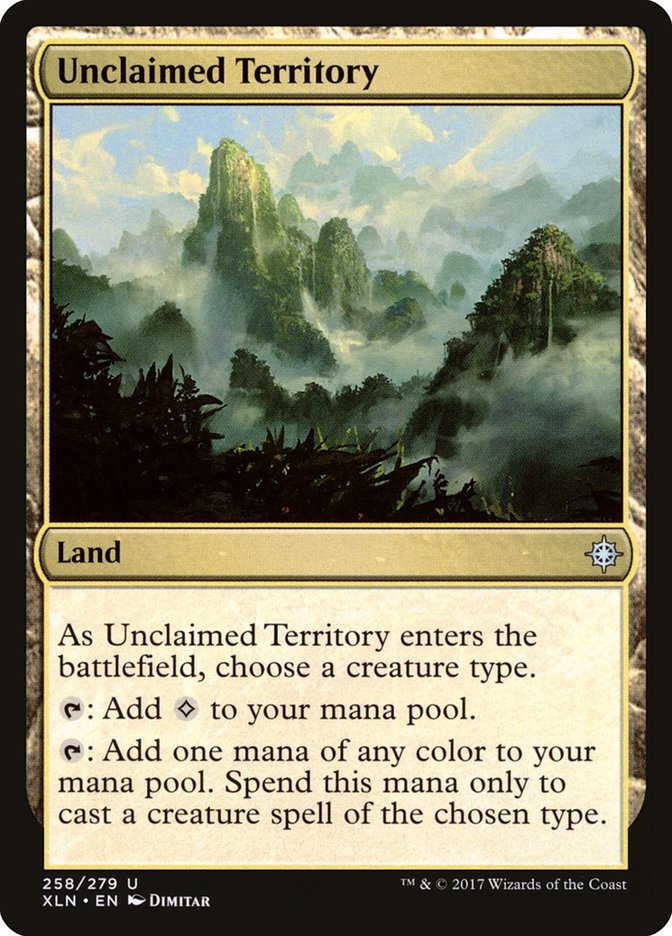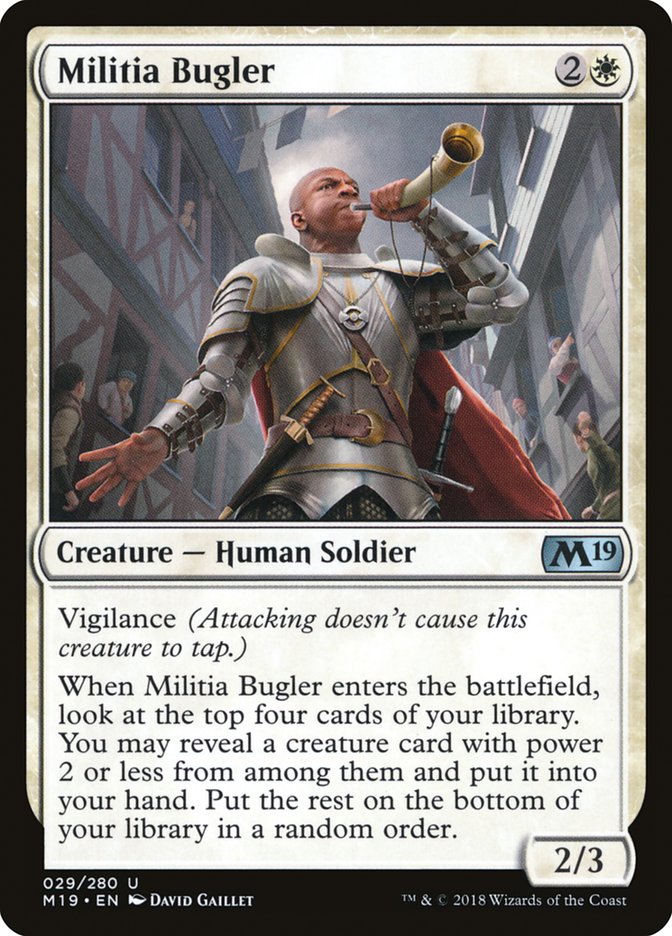Mythic Championship I, Cleveland is the dawn of a new era in Magic in more ways than one. Obviously, you can start with the . . . shall we say, controversial end of the Pro Tour moniker. Far more impactful than a mere name change, though, have been the regular streaming efforts that 31 of the best 32 players on the planet have taken on since the dawn of the Magic Pro League (and don’t forget that the only person not streaming from that 32-person group continues to share all his insight through weekly columns and podcasts here at Star City Games).
While Grand Prix video coverage currently seems to be a sad casualty of change, there’s no question that, since the release of Ravnica Allegiance, we’ve had the opportunity to view more hours of extremely high-level Magic deckbuilding and gameplay than in any other pre-Pro Tour/Mythic Championship period. All this publicly shared information has led to an almost indisputably agreed-upon foundation for Ravnica Allegiance Standard.
For purposes of review:
Sultai Midrange
Creatures (24)
- 4 Llanowar Elves
- 1 Carnage Tyrant
- 2 Hostage Taker
- 4 Wildgrowth Walker
- 4 Merfolk Branchwalker
- 4 Jadelight Ranger
- 1 Ravenous Chupacabra
- 4 Hydroid Krasis
Planeswalkers (3)
Lands (20)
Spells (13)

Since Week 1 of this Standard format, Sultai has been a fixture in elimination rounds. An upgrade of the already format-defining Golgari Midrange deck, Sultai has the tools to adapt to virtually any metagame and the Merfolk Branchwalker / Jadelight Ranger package assures that the deck will be able to efficiently mitigate mana issues. This is a skillful grinder’s dream deck and will have its fair share of supporters in Cleveland.
Mono-Blue Aggro
Creatures (18)
Spells (42)
- 20 Island
- 4 Opt
- 3 Spell Pierce
- 1 Entrancing Melody
- 2 Chart a Course
- 1 Lookout's Dispersal
- 3 Dive Down
- 4 Curious Obsession
- 4 Wizard's Retort
Sideboard

The new “it” kid on the block, Mono-Blue Aggro continues to gain momentum, claiming seven of the Top 32 slots at Grand Prix Memphis. First impressions of this deck painted it as a metagame call, designed to prey on big spell decks. As the format continues though, people are beginning to recognize that Mono-Blue Aggro is just the latest in a long line of blue-based tempo decks that have the capacity to deny your opponent access to any and all gameplans while simultaneously presenting a quick clock. The deck had a target on its back going into Grand Prix Memphis and still performed admirably. It’s not going anywhere at the Mythic Championship.
Mono-White Aggro
Creatures (26)
Spells (34)

Happily wearing the mantle of “blink and you’re dead” in this Standard format, the white aggro decks continue to keep opposing players honest. Players have finally begun to abandon the counterproductive blue splash in favor of a more streamlined approach and are being rewarded for doing so. While both Sultai and Esper decks theoretically have the tools to compete with Benalish Marshal and friends, they still must draw those tools in a timely fashion, and even then, Adanto, the First Fort gives Mono-White Aggro a real chance at winning a long game. The deck also presents Mono-Blue Aggro with its very worst matchup, assuring a persistent place in the metagame.
Esper Control
Planeswalkers (4)
Lands (25)
Spells (31)

Forces have conspired against Esper Control in recent weeks to weaken its positioning in the current metagame. Hyper-aggressive red decks were Esper Control’s favorite opponent and that deck has seen its metagame share dry up. With the remaining foundational decks presenting tough to even matchups for Esper Control, there just isn’t much incentive to go down this road at present. I’d expect this deck to be staunchly on the decline at the Mythic Championship, but you know some control aficionados will focus all their efforts on finding a way to make this archetype work.
Wilderness Reclamation
Creatures (2)
Lands (14)
Spells (44)

This foundational bundle of decks (including Temur Reclamation, Nexus of Gates, and possibly other variants) is the real wild card. As of yet, Wilderness Reclamation-based decks have found themselves at the mercy of a format stocked with Negates, Duresses, and aggressive clocks. However, buzz is beginning to build about Simic-based efforts to take all the turns. Kenta Harane used a sideboard plan leveraging a host of mana-generating creatures to surprise opponents and get a marquee finish for the format’s ever-looming boogeyman. Does that mean we’re on the verge of a Mythic Championship that will herald an era of dominance for Wilderness Reclamation?
As we head into to Cleveland this weekend, I’m expecting fewer surprise archetypes than ever before. These core decks are refined, powerful, and all capable of taking home the trophy. The most likely catalyst for an upset of this hierarchy is an existing deck – be it one of the aforementioned pillars of the format or a contender from what appears to be an expansive group of Tier 2 decks – picking up a new piece of technology to gain an edge against the field. If you’re looking for a sneak peek into what that technology might be, you’ve come to the right place.
Rekindling Phoenix
Creatures (19)
- 3 Siege-Gang Commander
- 4 Rekindling Phoenix
- 4 Dire Fleet Daredevil
- 4 Goblin Chainwhirler
- 4 Rix Maadi Reveler
Planeswalkers (1)
Lands (11)
Spells (29)

Creatures (26)
- 3 Siege-Gang Commander
- 4 Rekindling Phoenix
- 3 Dire Fleet Daredevil
- 4 Goblin Chainwhirler
- 4 Gruul Spellbreaker
- 4 Growth-Chamber Guardian
- 4 Zhur-Taa Goblin
Lands (14)
Spells (20)

Post-Ravnica Allegiance red decks found themselves facing an identity crisis. While cards like Light Up the Stage and Skewer the Critics were indisputably powerful in a vacuum, the reality of gameplay told a different story. The battlefield presence of Mono-Red Aggro was quickly outclassed by the bodies of Wildgrowth Walker, Hydroid Krasis, and Basilica Bell-Haunt. Meanwhile, the lifegain these cards provided took away any chance Mono-Red Aggro had of winning through sheer spell efficiency. If a body is singlehandedly countering two or more burn spells while simultaneously brick-walling your entire ground force, Skewer the Critics looks pretty silly.
It became clear that red would have to turn to persistent sources of large chunks of damage to make inroads in the format, and Rekindling Phoenix is the most persistent of them all. Both Grand Prix Memphis Top 8 competitors seized on the fact that removal had to get smaller in recent weeks to account for the sheer mana efficiency of Mono-Blue Aggro. You can live with getting your Cast Down countered if you can follow it up with a second spell. Having the four-mana investment towards Vraska’s Contempt go up in smoke is another story altogether. As far as Mono-Blue Aggro goes, their chances of beating the combination of some of the cheapest removal around backed up by Rekindling Phoenixes are extremely slim.
The potential homes for Rekindling Phoenix are not limited to Gruul and Rakdos. Big Red strategies might be ready for another go-around, and Grixis decks leveraging Rekindling Phoenix were a scourge of past Standard. Even more aggressive builds of Mono-Red Aggro have room to up their mana counts and get back to giving opponents the bird.
Speaking of concessions to Mono-Blue Aggro, finally people gave the deck some modicum of respect and played one of the most effective green sideboard cards against the archetype. Sultai and Gruul pilots added the efficient two-for-one in small numbers in Memphis, but I won’t be surprised if we see even greater representation for Harpooner in Cleveland. There aren’t many two-mana two-for-ones that can also pinch hit as a clock in situations where a maindeck would otherwise be saddled with some dead cards. Even blank two-mana 3/2s can do work against Esper and Simic pilots, and it’s nice that Harpooner is also a proactive and reactive out to Thief of Sanity.
The other question that bears asking: why haven’t Nexus of Fate decks turned to Kraul Harpooner yet? Kenta Harane played Atzocan Archer in his Simic Nexus deck, and while that certainly gets some style points, it just seems like Harpooner can do a whole lot more for less mana. Nexus decks have had struggles with both Mono-Blue Aggro and the odd Thief of Sanity for a few weeks now. If sideboard slots start being handed over to Kraul Harpooner, maybe Nexus of Fate decks can shore up those weak points.
When I recorded last week’s GAM Podcast, I actually had to stop and double-check that this card was still in Standard before I went off on everyone for not playing it. It’s not that Sorcerous Spyglass is a particularly “great” card. It’s just that certain decks that have been effectively locked out of the format due to weaknesses that Sorcerous Spyglass could easily answer. New builds of Simic Nexus play three to four copies of Search for Azcanta for a reason. They are incredibly reliant on having access to an Azcanta, the Sunken Ruin to close out a game. You even get to weaken their alternate sideboard kill condition of Biogenic Ooze with additional Spyglasses. Similarly, Esper Control looks woefully anemic when you take away their access to Teferi, Hero of Dominaria.
It was not that long ago that players were happily maindecking Sorcerous Spyglass. Obviously, we live in a different world now, but surely there are midrange decks longing to take a crack at this format but sitting out because they can never beat a resolved Teferi or can’t interact with a Search for Azcanta. If deckbuilders remember they have Sorcerous Spyglass as an option, some previously closed doors may reopen.
Unclaimed Territory
Creatures (26)
- 3 Siege-Gang Commander
- 4 Rekindling Phoenix
- 3 Dire Fleet Daredevil
- 4 Goblin Chainwhirler
- 4 Gruul Spellbreaker
- 4 Growth-Chamber Guardian
- 4 Zhur-Taa Goblin
Lands (14)
Spells (20)

I already praised Takao for tapping into the power of Rekindling Phoenix, but his other innovation might prove to be even more impactful. No one can deny that Goblin Chainwhirler lines up well against the existing monocolored aggro decks, but the included supporting cards will always be limited. While Jody Keith found success with a minimal black splash, Takao used Unclaimed Territory to unlock a true two-color deck that could still play The Chainwhirler. This Gruul Aggro deck reads like a list of cards I believe to be well-positioned in the format and the sideboard Cindervines even give this deck a shot against Nexus strategies.
If brave souls go out in search of other imperfect Unclaimed Territory decks such as this one, who knows what combinations will be unlocked at the Mythic Championship. Mardu Humans continues to exist just on the fringes of the format. Maybe a healthy dose of non-Humans is exactly what the deck needs to find its way.
Militia Bugler
Creatures (23)
- 4 Hostage Taker
- 4 Kitesail Freebooter
- 3 Ravenous Chupacabra
- 4 Militia Bugler
- 4 Thief of Sanity
- 4 Tithe Taker
Planeswalkers (2)
Lands (24)
Spells (11)

If you spent any time with the Esper Midrange decks that existed early in the format, you know that they were not the best at playing off the top of their deck. You’d wrestle the game to a point of parity or slight advantage and blank after blank would flow from the top of the deck. The games you had Thief of Sanity could quickly snowball in your favor, but if the card was dealt with, your deck was not of the same power level as the rest of the format.
Ken Yukihiro’s addition of Militia Bugler to the archetype is providing more virtual copies of Thief, which just might be the most threatening creature in the format. Beyond that, Bugler chains have the capacity to generate an immediate battlefield in late-game situations.
With seven removal spells stapled onto creatures (Ravenous Chupacabra, Hostage Taker); four living discard spells (Kitesail Freebooter); and anti-countermagic measures (Tithe Taker) all conveniently tied on to creatures with two or less power, Militia Bugler is finally living up to its toolbox potential. Throw in a dash of countermagic and the last of the truly overpowered planeswalkers and you might have a recipe for success that everyone (besides Ken) has completely overlooked.
***
Even if the dawn of a completely new archetype seems unlikely, I’m still anxious to see who will seize upon these glimmers of technology. Sometimes it’s just the player who’s willing to commit the hardest to a new inclusion in an archetype that redefines the format. Will a player pull the trigger on an even wilder Unclaimed Territory deck? Maybe a Nexus player will slot the full four Kraul Harpooners in their 75? Time will tell, and the champion will get to write the next chapter in what’s been a fascinating Standard format.


